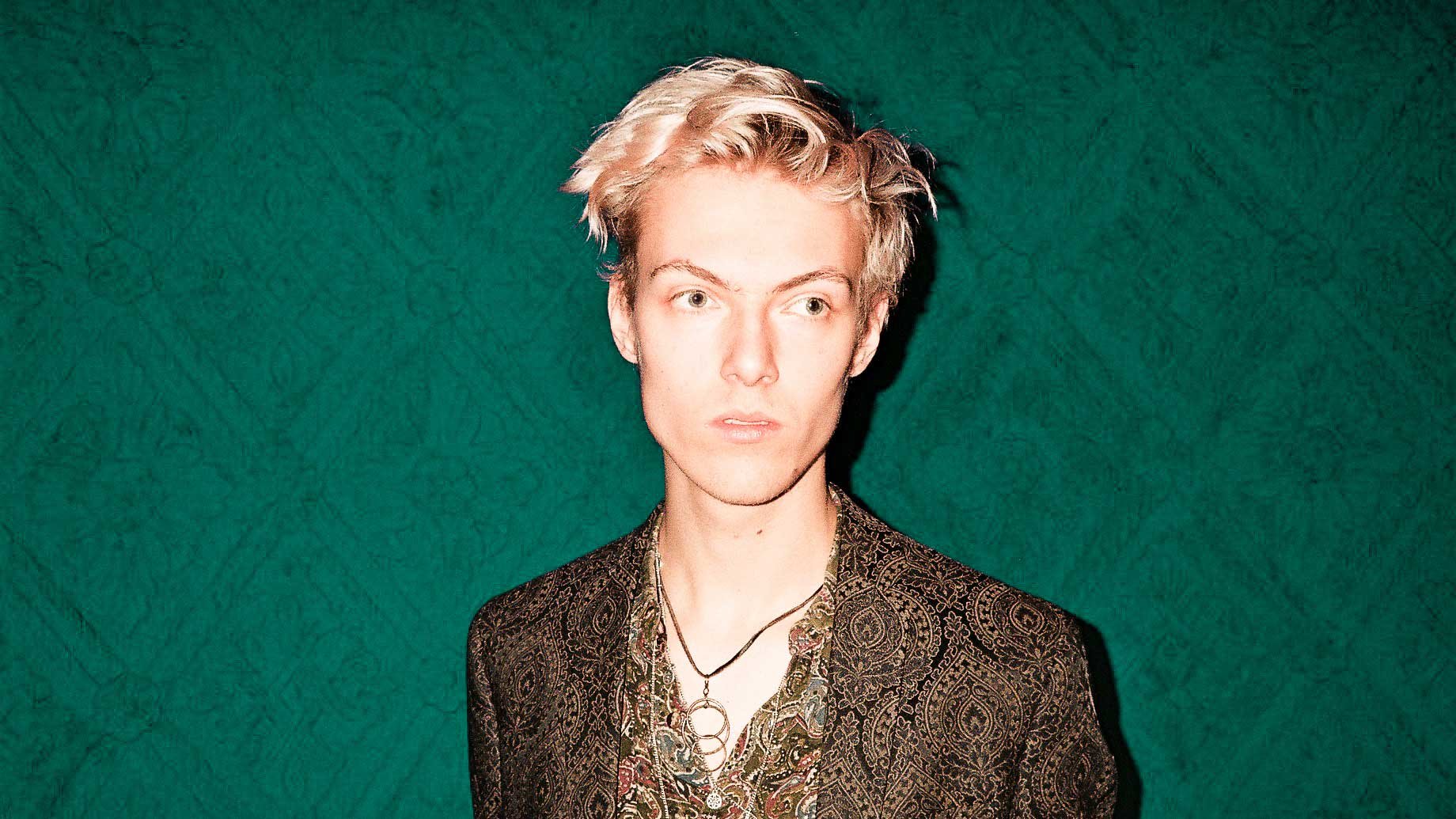Hvass debut album ‘The Flowers of Edo’
*Archive Article: Originally published in the magazine Blacklisted Copenhagen on August 16, 2016
A number of months ago, I caught wind of a little-known Danish musician by the name of Sebastian Hvass. I was going about my normal routine curating a weekly list of events in the city. As I do with all events, I did a little bit of research, checked out his work, and set about to do a little bit of internet stalking to see what his music was all about.
If the witching hour could be accompanied by a soundtrack, it would probably sound similar to Sebastian Hvass’ debut album Flowers of Edo. It invokes a feeling of solitude. You become like a wanderer with a singular destination while your hooves pound pavement and the city undulates with deep far off sounds — like sea creatures calling out in the murky depths.
HVASS has a way of casting liquidity over the world, and you begin floating through the ether, all the while giving you the feeling of immense singularity — as if you are a lone captain aboard a sinking vessel or a solitary being in a lifeless night.
We met at a small bodega on Elmegade in the Nørrebro district called Osborne, because I thought a small, smoky ambiance and the presence of old classic rock played through worn-out speakers might suit the character of this young musician.
In hindsight, after sitting down with Sebastian, I realize that my choice of venue—based on assumptions of what might suit this young artist—was misguided. I’ll admit, the whole indie/musician in a smoky Bodega smoking rollies is a bit trite, and while Sebastian flirts just enough with norms to remain familiar, his creative expression and his descriptions of his own processes pull him far from the standard “indie-rock musician” clichés.
BL: So before we promoted your last gig, I’d never heard of you. But, with the level composition in which your last EP was constructed, I assumed that you’d been around in the scene for a while. I didn’t quite realize how new the project was.
HVASS: Right ya, no, it’s….it’s really new.
BL: I really like it. It’s quite orchestral if I might call it that.
HVASS: Thank you. It’s…it’s different (laughs). I think sometimes it might suffer from being, you know, one guy in a room with some material, (laughs) but I’m happy with it.
BL: So do you record everything yourself?
HVASS: Yeah, most of it. On the EP, I recorded everything myself except for some backing vocals. I work mostly by myself. I have a home studio, where I like…I used to build electronics a lot…so I….built my own gear. But I don’t do that so much anymore. It’s not as affordable as you would think.
BL: So since you’re quite new to the scene, has it been difficult to book shows and get attention?
HVASS: Actually no, it just worked out, I think…it’s…. I mean, I think it worked out for me because I recorded the single first, Godspeed before I did anything else. I wrote the song like three years ago, but I recorded it about the same time that I recorded Flowers of Edo. I’ll be honest, it’s not my favorite song on the EP, but in some way I think it was a smart move to put that one out first because it’s more digestible than the rest, I guess. (laughs). You could say that the rest of the album is more chaotic, and only a few people will truly like…but I’m well aware of that. I like it that way.
BL: So is the Flowers of Edo EP a concept album?
HVASS: Ya….I think it is, but I didn’t call it a concept album when I released it because….well when someone releases their first EP calling it a “concept album” — it’s kind of a douchey move (laughs). It’s even hard for me to say that, Concept Album, but I guess you could say that it does have a very strong connection between all the pieces and song structure on the album.
BL: Is ‘Flowers of Edo’ conceptual in the way that the songs are composed musically? Or is it more than the songs have similar lyrical themes?
HVASS: Both. There are some songs that are instrumental, and some with little vocal parts. With some songs, the music is what, kind of, drives the idea.
I guess I had this mindset and concept that I wanted to construct some lyrics from—to match the music that I had created. I worked to…..somehow match lyrics and themes to the music, but that meant a lot of the lyrics got lost, you know? The lyrics are these small pieces of this huge puzzle. So, I guess if someone wanted to sit down and listen, it would probably take an infinite amount of time to try and figure out what I was doing. (laughs) But I like it that way. The songs kinda’ of taking on a life of their own.
BL: So is the next EP or album going to have a completely different sound—a new concept, if you will?
HVASS: Probably. I can’t make a number two of this, I think, it’s too unique sounding. I mean, I think that I have my own style that will, of course, be visible…but, I’m not going to make a Flowers of Edo #2. Maybe I’ll do a revised version at some point. I really like this concept of when you make a song, you have to let go of it at some point and let it become the “public’s” song — You know, let it grow on others instead of you.
But, I think it could be fun to do the opposite. To take my own song and revise and remake it myself and do it a different way — not letting go of it and just keep trying to do things with it, you know?
BL: Where did you get the reference to Flowers of Edo? I did some looking and it refers to a period in Japan, am I right?
HVASS: It’s a reference to the period between the 16th and 18th century of Japan when Tokyo was called Edo. And back then, the houses of Japan were built out of paper. A lot of fires broke out in Tokyo, or Edo…and it was a massive city…so usually when a fire broke out it would just burn down entire neighborhoods. So, they kind of built a society around the fact that these fires were destroying the city every day, and people were rebuilding it every day.
There were no real firemen back then in Japan, so all of the gangsters were creating these like….firemen tribes, and then it became a kind of racket—some of them would extort money and what not, or intentionally burn down houses to make money out a double business. This is where the term came from, you know, “Fires and quarrels are the flowers of Edo”.
BL: So is there a reference to that in the EP itself?
HVASS: Oh, yes. I found this story quite fascinating, even though it’s a bit of a complicated story, it’s really underrated. To me, it kind of tells the story of the things in life that are considered bad but can also be the things that hold life together. It also, in a way, questions what is “good” and what is “bad”, and also questions what is life when the only thing that holds it together is fire?……or, what is life when the only thing that drives you through it is a terrible disaster?
That’s a very, very dark corner, you know? So, I thought it would be fun to work with that, and try and find a bridge between that and the way that I see my own life.
BL: So, is your new single Illusion Hill, going to be part of a larger, different concept album?
HVASS: No. I mean when I wrote it, I said, “ok, I have an idea, but it’s not a big enough idea to make a full album.” Right now, there are no plans to make another EP or album or anything. I kind of want to feel like there is some kind of masterplan for an album and right now there isn’t, but it will come eventually.
BL: That’s kind of interesting, I mean most bands just keep writing songs, and when they have twelve songs they go in and record an album.
HVASS: Ya, I don’t want to do that. For me, there has to be an idea behind the complete recording.
BL: So, for the show that you have coming up at KW3, you’re collaborating with light artist Marcus WX? How did that come about?
HVASS: Marcus is an old friend of mine, we started hanging out when he found out that I was just as nerdy about electronics as he was. Then we started thinking about maybe doing something together. For this show, we not only collaborated on the light design, but also on art pieces that are part of the light design.
For this, we are using a very old concept used in the 1960s but we’re taking it into a new context. So we’re using these techniques and using them to create these little microscopic small universes that slowly collapse over time, these are projected up big on the walls. You have these plates with different liquids and colors in between two plates which light is projected through. Then we have these two other projectors that will take the information for the art pieces and then destroy them digitally and use it for the light show. It’s going to be really interesting.
Coming out of the interview—with someone I would now be more comfortable calling an artist rather than a simple musician—the word “interesting” was definitely one of the words that were left on my brain. It has been my experience that it’s rather rare to meet musicians, or artists, like Sebastian that take the time to think about all the details that surround that music that they make—from concept to composition and audience experience through to the overgrowth of their own artistic expression.
Now, I’m not trying to elevate him to some prodigious level, but Sebastian, in my opinion, is anything but the archetype of a young musician simply trying to make a name for himself. The way he writes and composes his songs, structures his music, and the way he thinks about how it needs to be consumed by the listener, may not be to the liking of some, but it is clear to me that Sebastian is well aware of that and does not care. He creates for himself and simply shares it with the world, and I for one am glad that he does.









